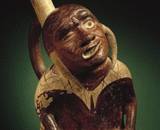Peripheral Facial Paralysis (PFP)
Facial nerve paralysis

Facial nerve paralysis is a common problem that involves the paralysis of any structures innervated by the facial nerve. The pathway of the facial nerve is long and relatively convoluted, and so there are a number of causes that may result in facial nerve paralysis.The most common is Bell's palsy, an idiopathic disease that may only be diagnosed by exclusion. Facial nerve paralysis is characterised by unilateral facial weakness, with other symptoms including loss of taste, hyperacusis, and decreased salivation and tear secretion. Other signs may be linked to the cause of the paralysis, such as vesicles in the ear, which may occur if the facial palsy is due to shingles. Symptoms may develop over several hours. Acute facial pain radiating from the ear may precede the onset of other symptoms.
Organism species: Mus musculus (Mouse)
- Customized Service n/a Model for Peripheral Facial Paralysis (PFP) Disease Model Customized Service Offer
- Customized Service n/a Tissue of Peripheral Facial Paralysis (PFP) (If Necessary) Tissue Customized Service Offer
- Customized Service n/a Serums of Peripheral Facial Paralysis (PFP) (If Necessary) Serums Customized Service Offer
Organism species: Rattus norvegicus (Rat)
- Disease model DSI743Ra01 Rat Model for Peripheral Facial Paralysis (PFP) In Stock
- Customized Service n/a Tissue of Peripheral Facial Paralysis (PFP) (If Necessary) Tissue Customized Service Offer
- Customized Service n/a Serums of Peripheral Facial Paralysis (PFP) (If Necessary) Serums Customized Service Offer
Organism species: Oryctolagus cuniculus (Rabbit)
- Customized Service n/a Model for Peripheral Facial Paralysis (PFP) Disease Model Customized Service Offer
- Customized Service n/a Tissue of Peripheral Facial Paralysis (PFP) (If Necessary) Tissue Customized Service Offer
- Customized Service n/a Serums of Peripheral Facial Paralysis (PFP) (If Necessary) Serums Customized Service Offer
Organism species: Rhesus monkey (Simian)
- Customized Service n/a Model for Peripheral Facial Paralysis (PFP) Disease Model Customized Service Offer
- Customized Service n/a Tissue of Peripheral Facial Paralysis (PFP) (If Necessary) Tissue Customized Service Offer
- Customized Service n/a Serums of Peripheral Facial Paralysis (PFP) (If Necessary) Serums Customized Service Offer


